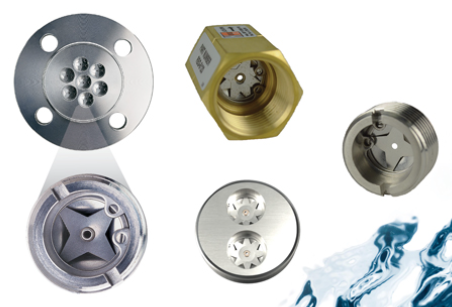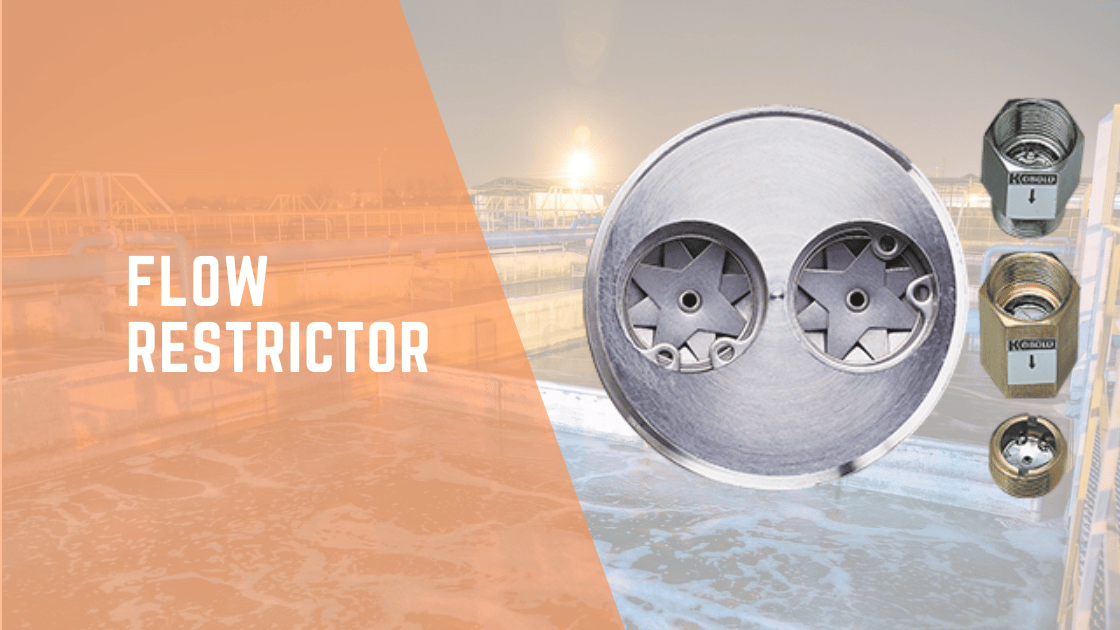Flow restrictors are commonly recognized for their role in showerheads, but they are also usedin various places around your home. They can be used in filtration systems, water heaters, and irrigation systems.
Flow restrictors are essential for safeguarding the health and efficiency of both home and industrial water systems. In the following sections, you’ll learn about what flow restrictors are, how they operate, their applications.
Table of Contents
ToggleWhat is a flow restrictor?
A flow restrictor, also called a flow regulator or flow controller, is a device that manages the amount of water flowing through an outlet. It ensures a consistent flow rate for systems that work best with steady water volumes, like water filters, irrigation setups, and tankless water heaters.
Flow restrictors help these appliances and filters operate efficiently, preventing potential damage from excessive water flow. In systems like reverse osmosis and water softeners, precise water contact time with filter media is crucial for effective water treatment.
Flow restrictors maintain the right water flow, ensuring these systems have a long lifespan while operating at peak efficiency.

Image Credit: Kobold.com
How does a flow restrictor work?
A flow restrictor acts as a barrier to heavy water flow, gradually reducing the space available for water to pass through. This reduction in space results in a lower flow rate, automatically decreasing the gallons per minute. The fixed cross-sectional area of a pipe that the water flows through means that the flow rate is influenced by pressure—increased pressure leads to increased flow.
The flow restrictor, operating as a two-port valve, maintains a steady water flow rate at an outlet. It achieves this by decreasing the area available for water to flow as the supply line’s volume increases. Flow restrictors are effective regardless of fluctuations in water pressure and are easily applicable in households. In low-pressure supply lines, they enhance user comfort, while in high-pressure lines, they save energy. Beyond managing water flow, flow restrictors also prevent excess pressure from causing damage to pipes, appliances, and fixtures.
These flow regulators not only save money by reducing appliance damage but also conserve water in high-pressure lines. In applications involving large water volumes, such as showers, water tanks, and filtration systems, flow restrictors can lead to monthly savings on your water bill.
Where are Domestic Flow Restrictors Used?
- Shower Head Flow Restrictors
- Reduction of Water Flow in a Fountain
- Reduction of Water Flow from a Tap
- Reduction of Water Flow from a Garden Hose
- Flow Regulators for Washers
Where are Industrial/Commercial Flow Restrictors Used?
- Fluid Metering, Controlling Flow Throughput
- Actuator, Cylinder, or Motor Speed Control
- Inkjet Printing
- Medical Applications
- Chilled Water Balancing
- Semiconductors
- Reverse Osmosis Systems
- Water Flow Regulation for Stills
- Even water distribution supply
- Food and Beverage
What are Benifits of Flow Restrictors?
- No auxiliary power required
- Easy to assemble
- Compact design
- Reliable – No wearing parts
- Easy to fit
- Energy saving
Do flow restrictors reduce water pressure?
No, flow restrictors do not alter pressure, but they consider it in their operation. The flow rate depends on the size of the outlet, upstream pressure, and downstream pressure. The pressure difference between both sides of an outlet dictates the fixture’s flow rate.
To accommodate pressure changes, flow restrictors reduce the volume of water flowing through when pressure rises. Conversely, the opening widens when pressure drops. This adjustment allows the flow rate to remain constant even as the pressure fluctuates.
Is a flow restrictor necessary?
In domestic settings, areas facing water scarcity benefit from water consumption control. Flow restrictors regulate water volume, reducing consumption and enabling more tasks to be accomplished with the same amount of water simultaneously. This not only saves time but also money, especially in areas where water is not closely monitored.
For industrial applications, when maintaining a constant flow in the process line is crucial, flow restrictors come into play to control extreme variations. Slowing down these variations can reduce the required turn-down specifications of downstream flow meters. The flow restrictor eases pressure on the upstream side, leading to a decrease in water output.
Conclusion
A flow restrictor is specifically designed to maintain a steady water flow rate. When paired with a pressure regulator, these devices work together to enable water to flow consistently without any build-up of pressure in the supply line.
I hope you like above blog. There is no cost associated in sharing the article in your social media. Thanks for reading!! Happy Learning!!

